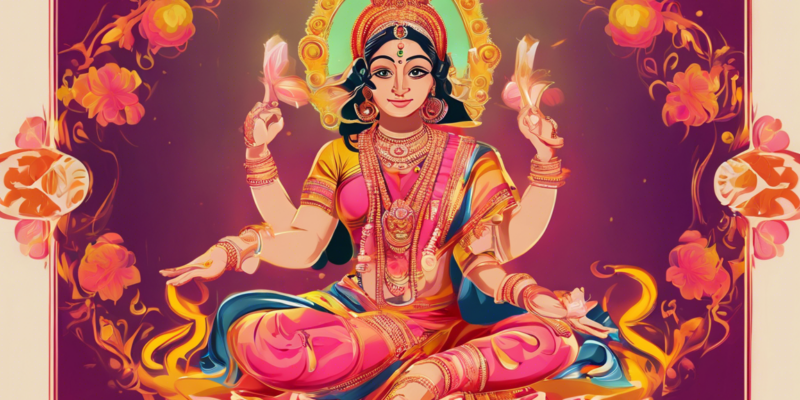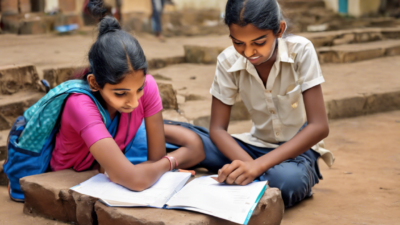The Kojagari Laxmi Puja is an important Hindu festival celebrated primarily in the eastern parts of India, especially in West Bengal, Odisha, and Assam. It is observed on the full moon day in the Bengali month of Ashwin, which typically falls in September or October. This auspicious day is dedicated to Goddess Laxmi, the Hindu goddess of wealth, prosperity, and fortune. People across these regions worship Goddess Laxmi to seek her blessings and ensure prosperity and well-being for their families. In this blog post, we will delve into the date, significance, and traditions associated with Kojagari Laxmi Puja.
Date of Kojagari Laxmi Puja 2023
In 2023, Kojagari Laxmi Puja is scheduled to be celebrated on Sunday, 8th of October. This date may vary slightly based on the lunar calendar and the sighting of the full moon.
Significance of Kojagari Laxmi Puja
Kojagari is derived from the Bengali term “Kojagara,” which translates to “who is awake.” It is believed that Goddess Laxmi roams the earth on this night, as she is in search of her devotees who are awake and engaged in prayer and worship. Therefore, devotees stay awake throughout the night, a practice known as “Jagran,” to welcome the Goddess into their homes and seek her blessings. It is said that individuals who observe this puja with devotion are bestowed with wealth, prosperity, and happiness.
Celebrations of Kojagari Laxmi Puja
1. Decoration of homes:
Homes are cleaned and decorated with colorful rangolis and alpana designs to welcome Goddess Laxmi.
2. Preparation of offerings:
Traditional sweets, fruits, and other delicacies are prepared as offerings to the deity.
3. Laxmi Puja ritual:
The puja typically begins in the evening and continues through the night. Devotees perform various rituals, including chanting of prayers, singing hymns, and offering flowers and incense to the goddess.
4. Observing the Jagran:
Devotees stay awake through the night, engaging in prayer, meditation, and singing devotional songs dedicated to Goddess Laxmi.
5. Singing of Laxmi Vandana:
The evening is often filled with the melodious rendition of “Laxmi Vandana,” hymns praising the goddess and seeking her blessings.
6. Feasting and distribution of Prasad:
After the puja, devotees break their fast by consuming the blessed food, known as Prasad. It is also distributed among family members, friends, and neighbors.
7. Lighting of lamps and candles:
Homes are illuminated with diyas (oil lamps) and candles to symbolize the dispelling of darkness and the ushering in of prosperity and positivity.
Frequently Asked Questions (FAQs) about Kojagari Laxmi Puja
1. What is the significance of staying awake during Kojagari Laxmi Puja?
Staying awake during Kojagari Laxmi Puja is believed to attract the blessings of Goddess Laxmi, who is said to visit the homes of her devotees on this auspicious night.
2. What are the traditional foods prepared during Kojagari Laxmi Puja?
Traditional sweets like rasgulla, sandesh, khichuri, chaler payesh (rice pudding), and khaja are commonly prepared as offerings to the deity.
3. Can Kojagari Laxmi Puja be performed by individuals at home?
Yes, Kojagari Laxmi Puja can be performed by individuals at home with sincerity and devotion. It is a personal and familial observance to seek the blessings of Goddess Laxmi.
4. Are there any specific mantras or prayers recited during Kojagari Laxmi Puja?
Devotees often recite Laxmi Vandana, Mahalakshmi Ashtakam, and Sri Sukta during the puja to invoke the blessings of Goddess Laxmi.
5. Is fasting a part of the Kojagari Laxmi Puja ritual?
Many devotees observe a fast during the day of Kojagari Laxmi Puja and break it only after the completion of the puja rituals at night.
6. What is the significance of lighting lamps and candles during Kojagari Laxmi Puja?
The lighting of lamps and candles signifies the dispelling of darkness, ignorance, and negativity, and the ushering in of prosperity, positivity, and enlightenment.
7. How is Kojagari Laxmi Puja celebrated in different regions of India?
While the basic rituals remain the same, the customs and traditions associated with Kojagari Laxmi Puja may vary in different regions, reflecting the cultural diversity of India.
8. Is there a specific dress code for Kojagari Laxmi Puja?
There is no specific dress code for Kojagari Laxmi Puja, but many devotees prefer to wear traditional attire while performing the rituals.
9. Can non-Hindus participate in Kojagari Laxmi Puja celebrations?
Yes, people of all faiths are welcome to participate in the celebrations of Kojagari Laxmi Puja, as it is a time for spreading joy, harmony, and blessings.
10. What are some common symbols associated with Goddess Laxmi in Kojagari Laxmi Puja?
Some common symbols associated with Goddess Laxmi during the puja include the lotus flower, the elephant, gold coins, and an owl, all of which symbolize wealth, wisdom, and prosperity.
In conclusion, Kojagari Laxmi Puja is a sacred and spiritually enriching festival that celebrates the presence of Goddess Laxmi in the lives of her devotees. It is a time for prayer, devotion, family gatherings, and the sharing of joy and blessings. By observing the rituals and customs with sincerity and faith, one can invite prosperity, wealth, and happiness into their lives, ushering in a brighter and more auspicious future.


